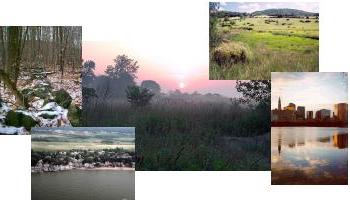Landscape Stewardship

The Connecticut landscape is the essential background for our environment, economy and community. The decisions we make today about how we use land are perhaps the most important environmental issue facing Connecticut. Working together to balance thoughtful and reasoned economic growth and community development with protection of our resources and our landscape will ensure a Connecticut that future generations can enjoy and benefit from as we have. Read on for more information on the background of landscape stewardship in Connecticut, DEEP's role, the vision, the goal and our partners.
Background
Land use decisions in Connecticut are, by custom and by law, primarily made at the local level by volunteer land use boards and commissions. There are many other stakeholders in these decisions, from the developer, to the municipal finance board, to the neighbors and the local voters. Encouraging, supporting and promoting informed land use and development conversations, choices and decisions is a complex but important challenge that is vital to address.
Governor M. Jodi Rell acknowledged that Connecticut is at a critical crossroads when she issued Executive Order 15 regarding responsible growth. DEEP's Landscape Stewardship Initiative is an important part of the Governor’s responsible growth effort.
DEEP’s Role
There is no single DEEP program that addresses all land use issues. We have a number of programs and initiatives that relate to land use including those that deal directly and indirectly with resource protection and land conservation. Numerous other programs conduct research and gather data on the land and water resources in Connecticut. These efforts span the breadth of the agency and include, as examples: the clean up of contaminated sites; protection and restoration of wetlands; management of forest and wildlife resources; open space acquisition; and the collection and evaluation of a wealth of information on soils characteristics, geological make-up and water resources both on and below the surface of Connecticut’s landscape. More information about these programs, resources and initiatives, including links to related web sites, is available throughout the DEEP web site for use by citizens, developers, local governments, students and anyone else who is interested in Connecticut's rich and varied landscape.
Vision
We envision a future Connecticut where development patterns will result in both the enhancement and restoration of vibrant and livable urban, suburban and village centers and the protection of viable and functional working, rural, and natural landscapes.
Goal
The goal of the Landscape Stewardship Initiative is to coordinate and focus the Department’s many programs that influence land development to ensure that they are not having unintentional adverse effects. In doing so, we will enhance our ability to assist municipalities, land trusts, landowners and others in making better informed land use decisions, resulting in better stewardship of our shared landscape.
Partners
Through this initiative we are reaching out to the many entities involved in land use, development and/or conservation. These include: local land use boards and commissions and their staff; federal, state and local officials; regional planning agencies, councils of government and councils of chief elected officials; private developers; non-governmental organizations; and interested local citizens, among others. To provide us with guidance and feedback on the initiative, we worked with an advisory committee of diverse stakeholders.
Content last updated November 30, 2011

